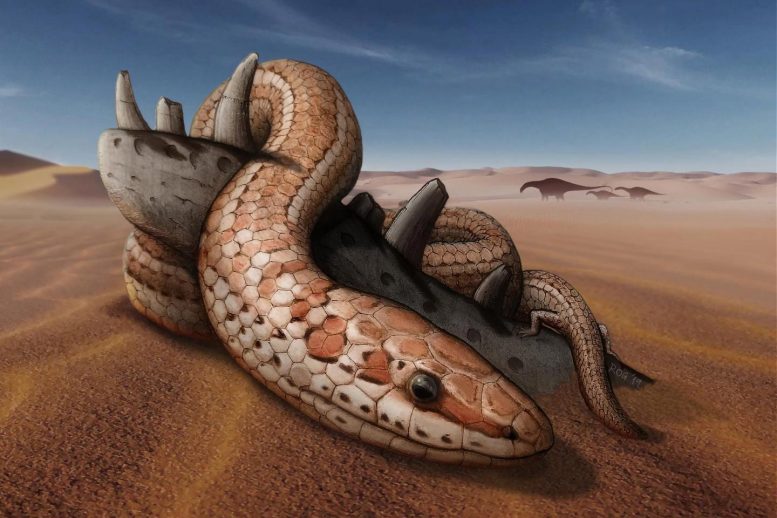A very well preserved fossil of Najash rionegrina, enabled paleontologists to reassess the timeline of limbs on snakes.
Researchers have found scientific evidence that the ancestors of modern snakes were big with big bodies and big mouths and not small burrowing reptiles that had been the accepted norm for more than 100 years.
Paleontologists with Universidad Maimónides, Buenos Aires and the University of Alberta studied a well preserved fossil of Najash rionegrina, a snake with small rear limbs. The study, “New Skulls and Skeletons of the Cretaceous Legged Snake Najash, and the Evolution of the Modern Snake Body Plan,” determined that around 100 million years ago these reptiles still had a cheekbone or jugal bone, which are gone from modern snakes. The paper is published in Science Advances.

Credit: Raúl Gómez
A very well preserved fossil of Najash rionegrina, enabled paleontologists to reassess the timeline of limbs on snakes.
“Our findings support the idea that the ancestors of modern snakes were big-bodied and big-mouthed—instead of small burrowing forms as previously thought,” Fernando Garberoglio, of Fundación Azara at Universidad Maimónides, in Buenos Aires, Argentina and lead author on the study told Science Daily. “The study also reveals that early snakes retained their hindlimbs for an extended period of time before the origin of modern snakes which are for the most part, completely limbless.”
CT Scan Details When Snakes Lost Legs
The newly studied fossils help reconstruct the beginnings of the evolutionary history the today's snakes.
“This research revolutionizes our understanding of the jugal bone in snake and non-snake lizards,” said Michael Caldwell, professor in the Department of Biological Sciences and Earth and Atmospheric Sciences, and a co-author on the study. “After 160 years of getting it wrong, this paper corrects this very important feature based not on guesswork, but on empirical evidence.”
The fossil is around 100 million years old and was found in Northern Patagonia. It is closely related to an ancient lineage of snakes that were once common in the Southern Hemisphere continents of Gondwana and, according to the study, are only related to a small number of modern snakes.
Micro-computer tomography (micro-CT) was employed to help the researchers visualize the skull structure of Najash rionegrina, looking at the pathways of the reptile's nerves and blood vessels and other aspects of the skull structure without damaging it.



